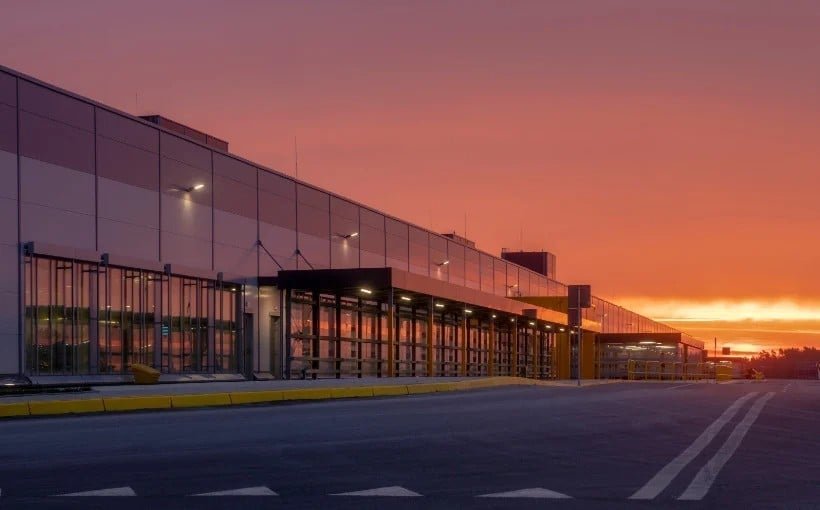

In a commercial real estate sector historically defined by five- to seven-year lease terms, industrial leasing has long been slow to adapt to the speed of modern logistics. But with e-commerce growth, supply chain volatility, and on-demand fulfillment reshaping tenant behavior, the old playbook no longer works. Today’s industrial users need agility, not rigidity, and that’s exactly where Warehub is stepping in.
Warehub, a full-stack SaaS marketplace for short-term and fractional industrial leasing, is taking aim at a long-overdue transformation in CRE. By digitizing and streamlining the entire leasing lifecycle from discovery to execution, Warehub offers a tech-native solution to one of the industry’s most persistent inefficiencies: underutilized industrial space.
At over $234 billion annually, the U.S. industrial leasing market is enormous, yet structurally sluggish. Traditional leasing models prioritize stability over flexibility, often requiring multi-year commitments that don’t align with the operational realities of fast-scaling logistics operators or global retailers managing variable inventory. The result is that landlords often sit on idle capacity, while tenants struggle to find short-term, ready-to-use space that supports rapid deployment or market testing. These inefficiencies are built into the existing system and have remained largely unaddressed, until now.
Warehub, founded by CRE veteran and Harvard Innovation Lab member James Holbrook, was developed specifically to meet this challenge. The platform is not a listing service or a logistics management tool. It is a vertically integrated digital marketplace that enables real-time leasing of warehouse space, complete with embedded insurance, supplier onboarding, and dynamic pricing. By focusing on the transaction itself rather than the surrounding logistics, Warehub puts real estate at the center of the process.
Its core innovation lies in enabling direct landlord-to-tenant leasing while integrating suppliers and insurers into a shared, performance-based ecosystem. This structure benefits every participant involved. Landlords are able to monetize fractional or idle space, improve NOI, and gain real-time visibility through performance metrics that guide asset strategy. Tenants gain access to flexible, turnkey space with low risk and clearly defined terms. Suppliers operate in a merit-based environment where transparency and execution speed are rewarded. Insurers gain access to structured data that expedites underwriting and improves accuracy.
Unlike platforms built from theoretical models, Warehub’s functionality is grounded in actual operating experience. With more than 1,300 executed short-term leases completed during its early rollout, the platform has already proven itself with major retailers and logistics providers. These clients have leveraged Warehub to secure space more quickly, reduce fixed overhead, and scale operations without the burdens of long-term commitments.
Asset managers, meanwhile, are using the platform to extract new value from underperforming assets while optimizing their broader portfolios. Dynamic pricing, data-rich dashboards, and embedded supplier activation tools all support a more strategic approach to asset management. This enables decisions that are based not just on occupancy, but on performance, demand signals, and market responsiveness.
Warehub also redefines how leasing itself happens. Instead of relying on traditional brokerage models, phone calls, or static spreadsheets, the platform automates and centralizes the entire process. Digital contracting, real-time availability, and integrated execution tools streamline the timeline from interest to occupancy, turning what used to take weeks or months into days. For CRE professionals, this transition represents more than convenience. It is a shift from reactive space management to proactive portfolio strategy, where data and execution speed are core differentiators.
The company has ambitious plans to continue evolving. Warehub is building toward becoming an intelligent infrastructure layer for the entire industrial leasing ecosystem. With deeper automation, predictive analytics, and further integration into third-party platforms, it aims to give stakeholders not just visibility into what’s happening now, but insights into what’s coming next. As short-term industrial space becomes a standard feature of logistics and supply chain strategy, platforms like Warehub will be central to how capital is deployed, assets are evaluated, and risk is managed.
For commercial real estate executives, the broader implication is that agility is no longer optional. Tenants increasingly expect flexibility, transparency, and speed. Owners are under pressure to do more with existing space, and investors are demanding better performance metrics and faster execution. Warehub meets these demands through a tech-forward model that aligns with the operational tempo of modern industry.
As the industrial sector continues its rapid evolution, technology will be the deciding factor in who adapts and who is left behind. Warehub is making a strong case that the future of leasing is flexible, data-driven, and ready for activation—without waiting on traditional timelines or outdated models.
The post Tech-Enabled Agility: How Warehub Is Rewriting the Rules of Industrial Leasing appeared first on Connect CRE.





